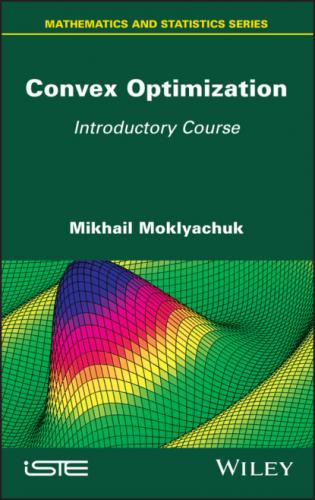columns of the matrix A. We construct the function F : ℝm + 1 → ℝm + 1 with the help of functions fk(x), k = 0, … , m. Let
Here x1, … , xm + 1 are variables, and
that is
where x(ε) = (x1(ε),… , xm + 1(ε),
Thus, to determine m + n + 1 unknown λ0, λ1, … , λm,
Note that the Lagrange multipliers are determined up to proportionality. If it is known that λ0 ≠ 0, then we can choose λ0 = 1. Then the number of equations and the number of unknowns are the same.
Linear independence of the vectors of derivatives
Since the time of Lagrange, almost a century ago, the method of Lagrange multipliers has been used with λ0 = 1, despite the fact that in the general case it is wrong.
As in the case of the unconstrained optimization problem, the stationary points of the constrained optimization problem need not be its solution. There also exist the necessary and sufficient conditions for optimality in terms of the second derivatives. Denote by
the matrix of the second-order partial derivatives of the Lagrange function L (x, λ, λ0).
THEOREM 1.17.– Let the functions fi(x), i = 0,1, … , m be two times differentiable at a point
for all λ, λ0, satisfying the condition
and all h ∈ ℝn such that
THEOREM 1.18.– Let the functions fi(x), i = 0, 1, … , m, be two times differentiable at a point
Assume that for some λ, λ0, the condition holds
and, in addition,
for all non-zero h ∈ ℝn satisfying the condition
Then
We can formulate the following rule of indeterminate Lagrange multipliers for solving constrained optimization problems with equality constraints:
1 1) Write the Lagrange function
2 2) Write the necessary conditions for the extremum of the function L, that is:
3 3) Find the stationary points, that is, the solutions of these equations, provided that not all Lagrange multipliers λ0, λ1, … , λm are zero.
4 4) Find a solution to the problem among the stationary points or prove that the problem has no solutions.
1.4.2. Problems with equality and inequality constraints
Let fi : ℝn → ℝ be differentiable functions of n real variables. The constrained optimization problem with equality and inequality constraints is the following problem:
We will formulate the necessary conditions for solution of the problem [1.3].
THEOREM
